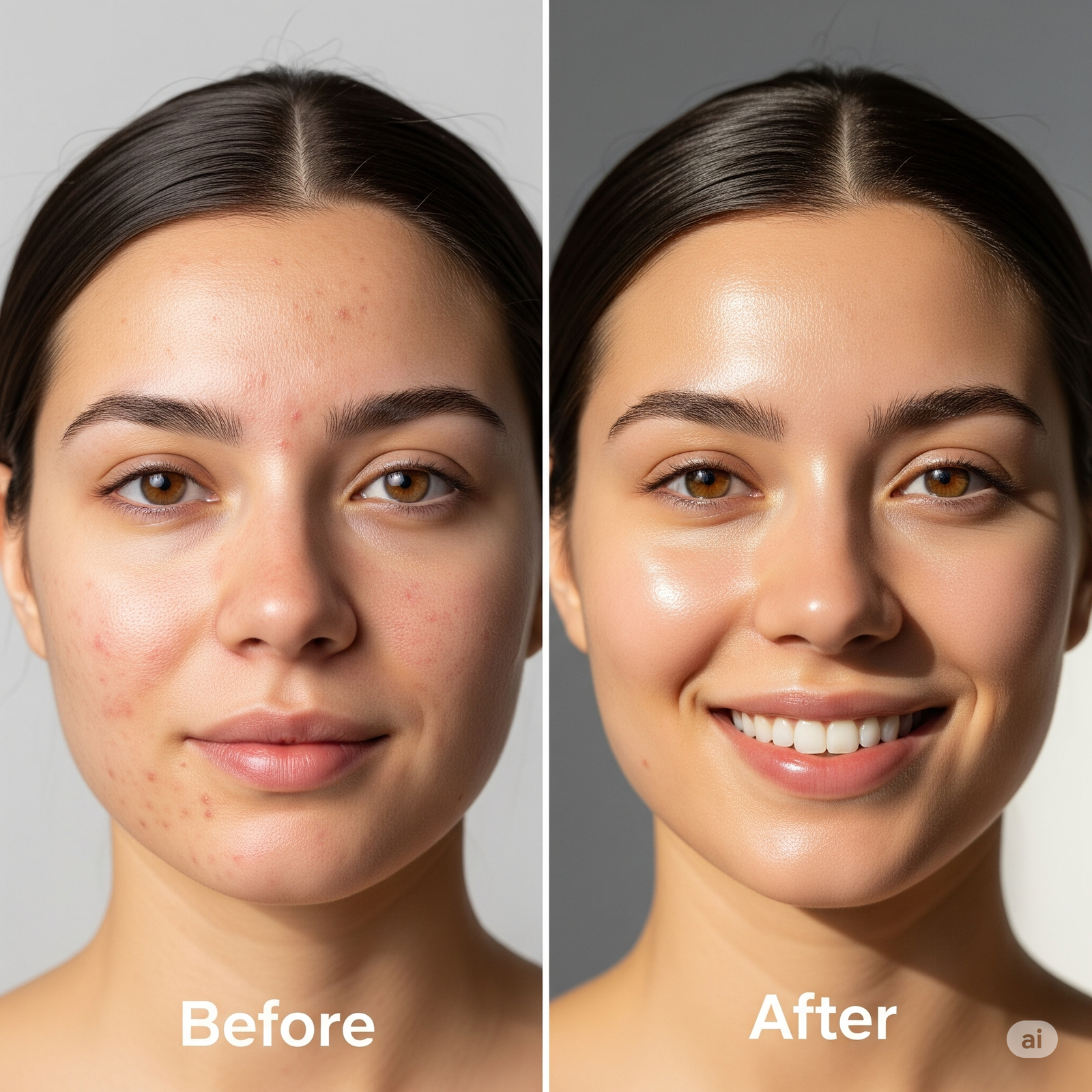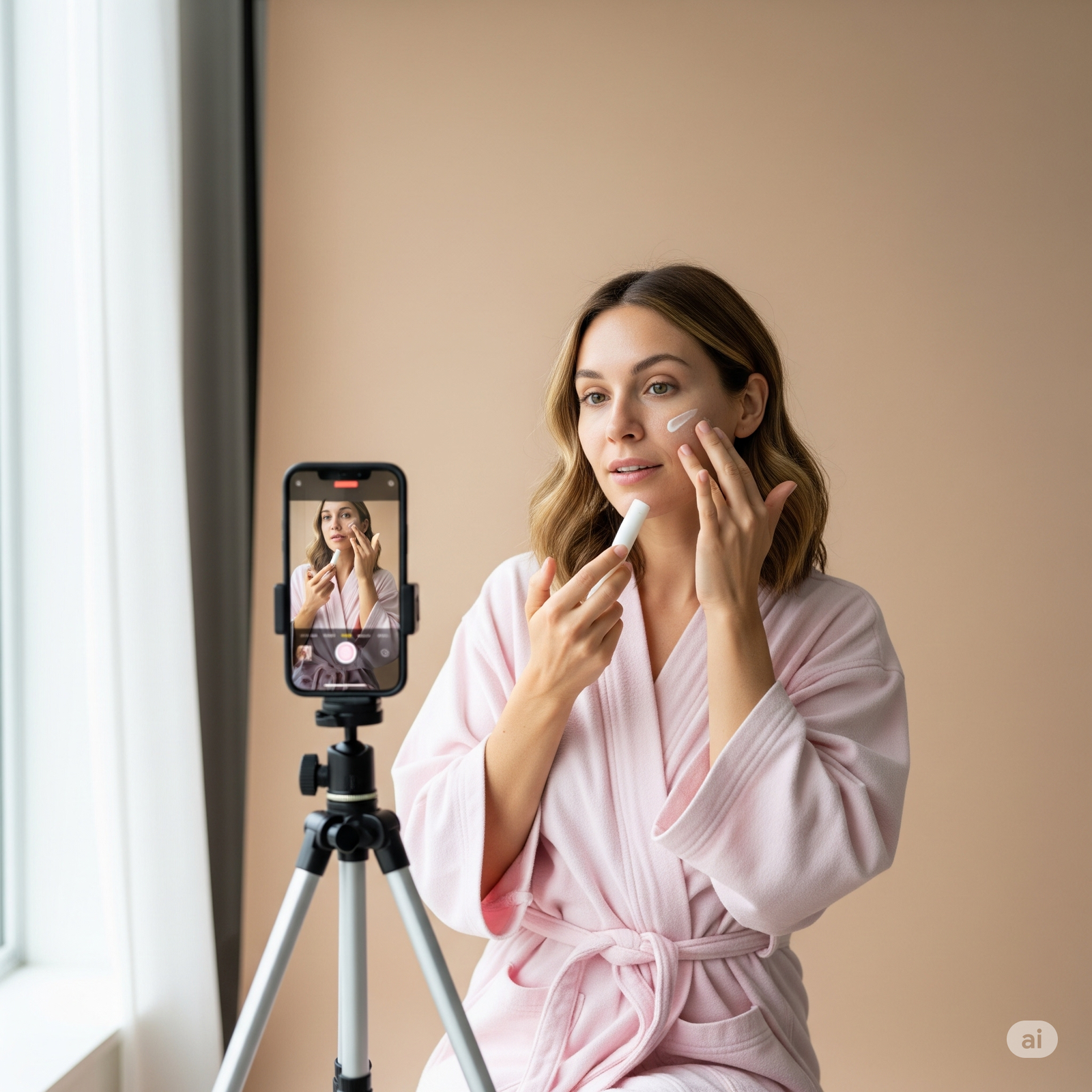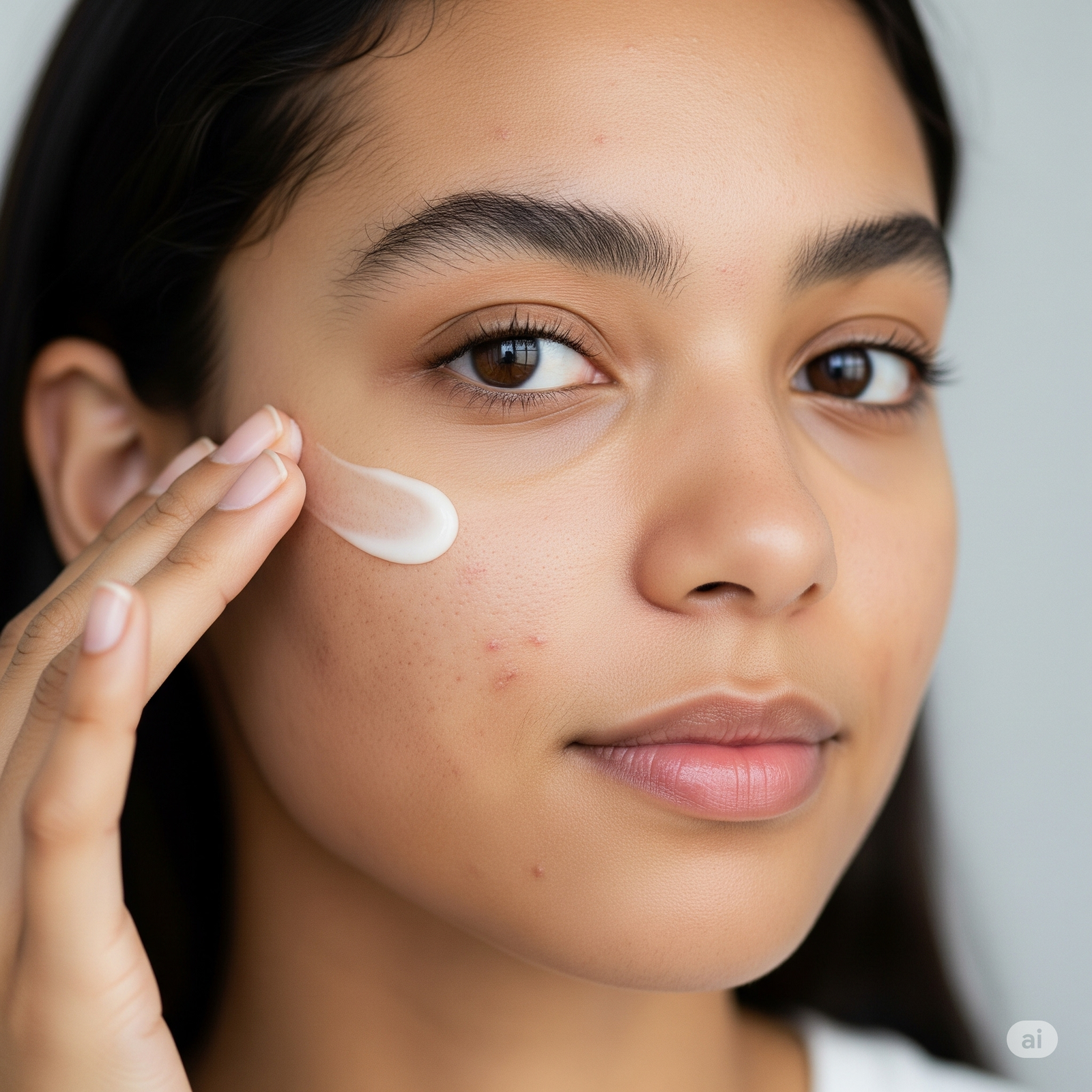Storytelling Through Skin: Why Before and After Works
Discover why skincare before after reels work. Learn how skin storytelling content builds trust with real results, honest light, and no-retouch visuals that convert.
26 Jun'25
By Niharika Paswan


Storytelling Through Skin: Why Before and After Works
There’s something undeniably powerful about a well-shot skincare before after reel. No script. No product label in the frame. Just real skin, real light, and real change. In an era where consumers scroll fast and trust slowly, this kind of content cuts through the noise not because it’s flashy, but because it’s honest.
The skin, when captured right, tells a story. A redness calming down. A dark spot fading. A texture smoothing out over weeks. These aren’t just visuals. They’re proof. And in beauty, especially skincare, proof is everything.
Before/after content isn’t new, but the way we shoot it, frame it, and share it has evolved. Today, what works isn’t retouched perfection. It’s raw, believable, well-lit skin storytelling content that helps people picture the results on their own face.
So let’s dig into why skin-led visuals work so well, how to do them without falling into the trap of over-editing, and what you should know to create before/after content that sells without overselling.
Why Before/After Still Converts

In a saturated skincare market, attention is currency. And nothing captures attention like transformation. A clean skincare before after reel, especially when done with natural light and real users, stops the scroll because it delivers immediate clarity.
Here’s what it does right:
- It visualizes the product promise. You don’t have to say it calms irritation or fades acne marks. You show it.
- It creates credibility. Viewers know when something looks too polished. When your content is grounded in real texture and gradual change, it feels trustworthy.
- It speaks to results, not hype. Beauty buyers are tired of jargon. They want to know: “What will this do for my skin?”
A skincare before after reel is one of the fastest ways to answer that question visually, emotionally, and effectively.
Skin Is the Most Relatable Canvas
Unlike hair or makeup, skin is universal. Everyone has it. Everyone cares about it. And everyone sees its changes up close.
That’s why skin storytelling content performs across audiences like teen acne routines, mid-30s glow-ups, barrier repair journeys. There’s always someone watching who’s been there and wants to get here.
What works:
- Familiar issues: Dry patches, oiliness, uneven tone, pigmentation. Showing real skin concerns builds empathy.
- Time lapses: Not just a Day 1 vs Day 30 split. Consider showing weekly check-ins. The progression makes it more believable.
- Consistent light and angle: No fancy edits. Just skin in natural light, same framing, no distractions.
Treat the skin like a storybook. Each day or week is a page. Don’t skip to the ending, show the journey.
Framing Matters More Than Filters
How you frame your skincare before after reel determines how it's perceived. You can have the most effective product in the world, but if your visuals look manipulated, trust goes out the window.
Here’s how to frame right:

- Use natural daylight: Always. It brings out real texture, undertone, and glow without artificial drama.
- Same distance, same pose: The key to credibility is visual consistency. If the “after” is zoomed in, smiles more, or is at a different angle, it signals manipulation.
- Include neutral expressions: Let the skin speak. Happy expressions are great, but make sure viewers can compare the skin and not the mood.
- Avoid heavy backgrounds: Use clean, soft-toned walls. This draws the focus where it matters, on the skin.
The less “produced” your reel feels, the more effective it becomes. Let the rawness be the polish.
The Rise of the No-Retouch Aesthetic

Audiences have become more visually literate. They can spot a smoothing filter. They can tell when a before/after has been lightened or retouched. And they’re tired of it.
What’s winning in 2025? No-retouch aesthetics.
It’s the shift toward:
- Visible pores
- Texture retained
- Undereyes left as it is
- Scars, spots, and unevenness left in frame
This isn’t laziness. It’s transparency. And in a market where even sunscreen reviews are scrutinized, honesty becomes your sharpest conversion tool.
When planning your next skincare before after reel, choose lighting and framing that enhance the truth not hide it. You’ll build more trust in one reel than five polished ad carousels.
Skin Storytelling Content That Doesn’t Just Show, It Connects!
Want to take your visuals beyond surface-level proof? Build narrative into your content.
Try this storytelling arc:
- Introduction: The user talks to camera about their skin issue
- Day 1 skin close-up: No makeup, soft light, neutral angle
- Routine snippets: Small clips showing how the product is used daily
- Progression: Weekly or bi-weekly check-ins with subtle overlays
- Wrap-up: Final shot and short reflection, did it meet expectations?
This format is emotional, real, and binge-worthy. It turns your before/after into a mini-documentary and keeps people watching all the way through.
Pro tip: add subtitles. Skin storytelling content is often consumed without sound, and clear text boosts both comprehension and saves.
Admigos: Honest Lighting and Animation Overlays That Highlight Real Skin
At Admigos, we specialize in visual content that doesn’t just look good, it builds belief too.
When we create skincare before after reel formats, we don’t rely on face filters or smoothing tricks. We work with honest light, consistent framing, and subtle overlays that guide the eye, not deceive it. Our postproduction teams focus on enhancing clarity, not altering reality.
Sometimes, we’ll layer a minimal animation such as a dotted line showing the fade of a dark spot, or a translucent overlay to indicate skin calmness. These elements help reinforce the transformation without masking it.
It’s our way of proving that you don’t need retouching to tell a powerful story. You just need the right lens on the truth.
How to Avoid Legal and Ethical Pitfalls
If you're making skin-led visuals, especially in skincare, you need to tread carefully. Misleading content can damage more than trust, it can land you in compliance trouble.
Keep these tips in mind:
- Avoid language like “guaranteed results” unless you’ve run a clinical study.
- Don’t use overly dramatic transitions (like sepia-to-full-color) that imply emotional healing.
- Include disclaimers for sensitive or acne-prone skin journeys.
- Always note if it’s a personal result, not a universal outcome.
- Ethics matter. Transparency builds reputation. And reputation sells long after the campaign ends.
What Types of Skin Storytelling Content Work in 2025
Let’s round this out with content types that are getting strong traction this year:
- Real-user reels: Think skin journaling over 14 to 30 days, edited into 10-second reels with clear captions
- Side-by-side grids: Day 1 vs Day 21, no zooming, no flash
- Swipe carousels: Progression through each week, one frame per slide
- Ingredient-led before/after: Showcase how one hero ingredient (like niacinamide or azelaic acid) impacts specific skin issues
- Voiceover-led stories: Combine skin footage with voiceover storytelling for deeper emotional connection
These formats prioritize relatability, education, and clarity core values in modern beauty marketing.
Final Thought: Real Skin Is the Most Convincing Story
You can talk about ingredients all day. You can invest in campaign copy and influencer pushes. But at the end of the scroll, your audience wants to see it.
Skin is the proof. And before/after content, when done right, is one of the most effective ways to earn that “Add to Cart” click.
So the next time you plan your content shoot, don’t just ask what product features you need to show. Ask: what does this look like on real skin, over real time, in real light?
Answer that well and you’ve already won half the trust battle.
— By Niharika Paswan
What Makes a Palette Go Viral?
From influencer collabs to swatch ASMR, here's what makes an eyeshadow palette go viral. Campaign ideas to help your brand trend on TikTok and beyond.

How Lighting Changes Your Cheek Product Payoff
Unlock how lighting—from warm to cool, hard to soft—can dramatically shape your blush and highlighter look. With insights into lighting angles, temperature, and diffusion, learn why your cheek glow can go from “lit-from-within” to “washed-out” depending on the light above.
